15 Places to Visit in Chittorgarh – How Reach? Best Time, Attraction
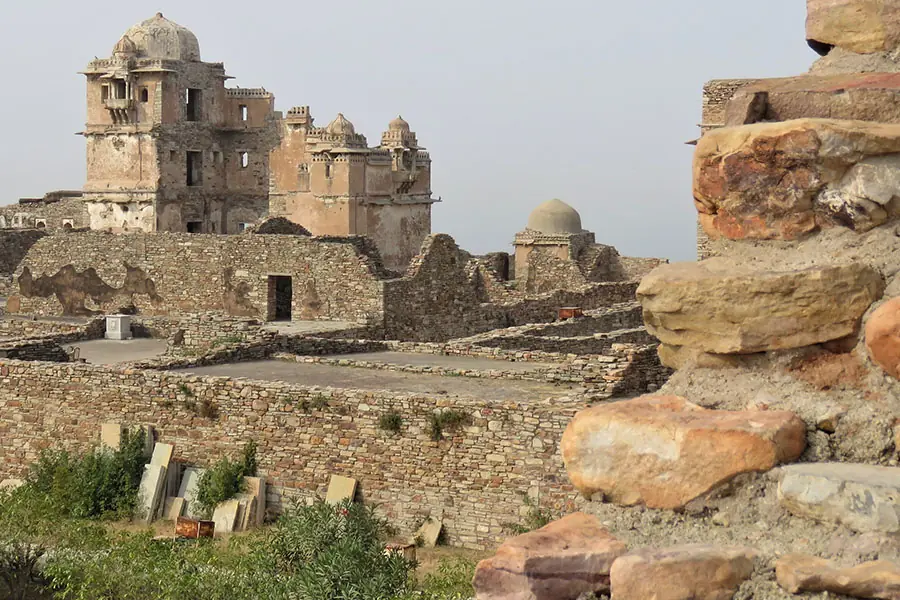
Chittorgarh, a city steeped in history and culture, stands as a symbol of valor and honor. Known for its epic stories of bravery and sacrifice, it is an essential destination for anyone interested in Rajasthan’s rich heritage. From magnificent palaces and temples to serene lakes and waterfalls, Chittorgarh offers a unique blend of historical marvels and natural beauty. Let’s explore the Top 15 Places to Visit in Chittorgarh that will transport you back in time and leave you in awe of its cultural legacy.
1. Chittorgarh Fort

At the heart of Chittorgarh lies the magnificent Chittorgarh Fort, one of India’s largest and most significant forts. Built in the 7th century by the Mauryans, this massive fort spans over 700 acres. The fort sits on a hilltop and provides a panoramic view of the surrounding areas, making it a photographer’s paradise. This historic landmark represents the bravery of Rajput warriors and the self-sacrifice of their women, including the famous story of Rani Padmini’s jauhar (self-immolation).
Inside the fort, visitors can explore various palaces, temples, and reservoirs that showcase the grandeur of Rajput architecture.
Key Attractions within Chittorgarh Fort:
- Vijay Stambh: A victory tower built by Maharana Kumbha to commemorate his victory over Mahmud Khilji.
- Rana Kumbha Palace: Known for its intricate architecture and historical significance.
- Gaumukh Reservoir: A sacred water tank that never runs dry.
2. Vijay Stambh (Victory Tower)
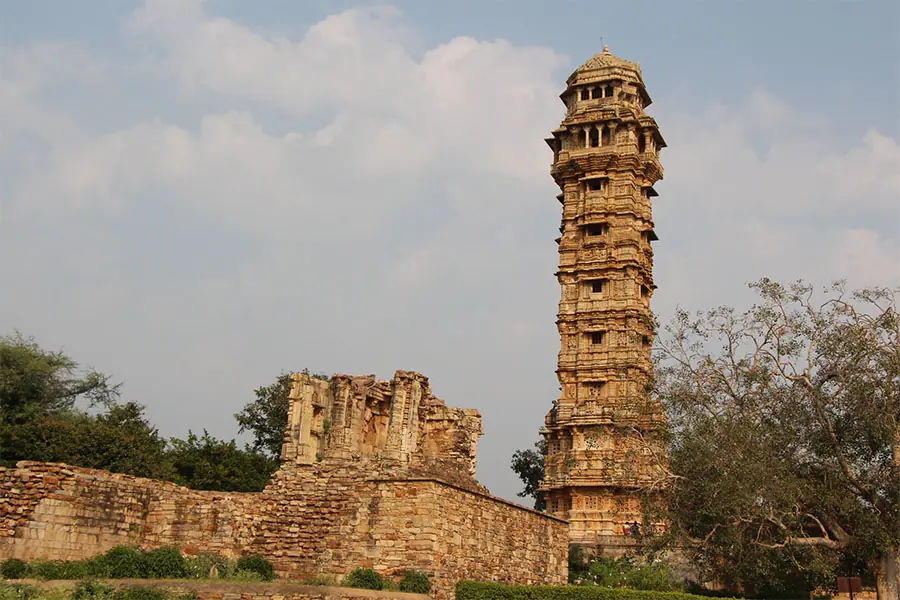
Vijay Stambh, also known as the Tower of Victory, is one of the most iconic landmarks in Chittorgarh. Maharana Kumbha built this nine-story tower in 1448 to celebrate his victory over the Sultan of Malwa. The tower stands at 122 feet and features intricate carvings that depict Hindu gods and scenes from the Ramayana and Mahabharata. Tourists can climb the tower to enjoy a stunning view of the entire fort and the surrounding landscape.
3. Kirti Stambh (Tower of Fame)
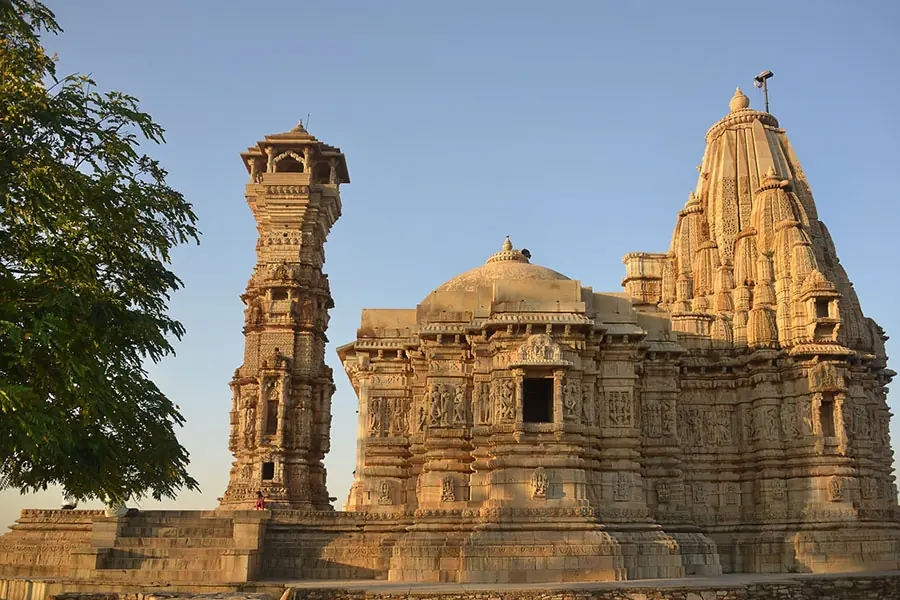
Another must-visit tower within the Chittorgarh Fort is the Kirti Stambh, or Tower of Fame. Built in the 12th century, this seven-story structure is dedicated to Adinatha, the first Jain Tirthankara. The tower is smaller than Vijay Stambh but equally captivating, with beautiful Jain sculptures adorning its exterior. Kirti Stambh is a sacred site for Jain pilgrims and offers a peaceful retreat for visitors.
4. Padmini Palace
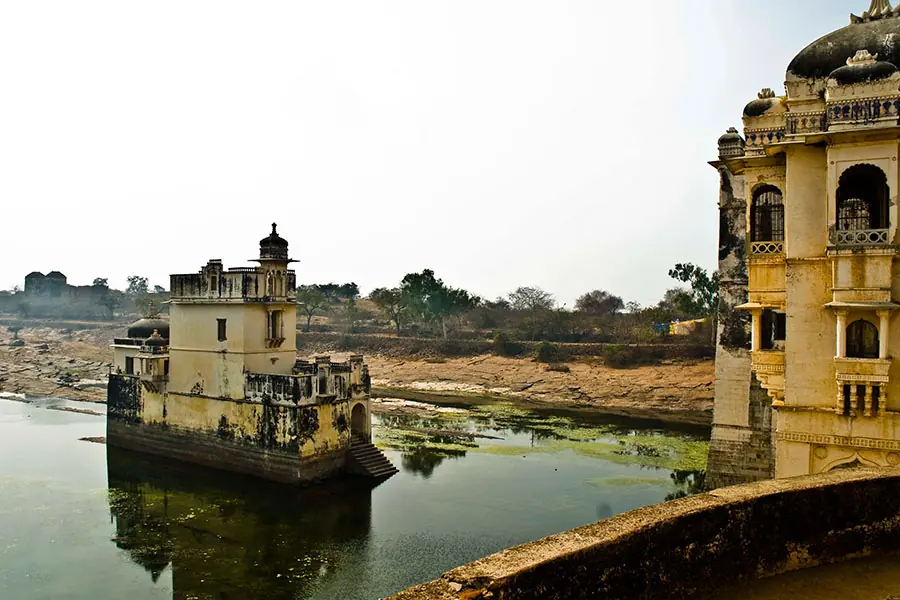
Padmini Palace tells one of the most tragic and heroic stories in Indian history. Rani Padmini’s beauty attracted Sultan Alauddin Khilji, who laid siege to Chittorgarh Fort in a bid to capture her. The queen ultimately chose to sacrifice herself rather than submit to Khilji’s advances, and her story became legendary. The palace sits amidst a lotus pond, where Khilji is said to have first glimpsed Rani Padmini’s reflection. Today, visitors can walk through the serene gardens and reflect on the courage and resilience of the Rajput women.
5. Rana Kumbha Palace
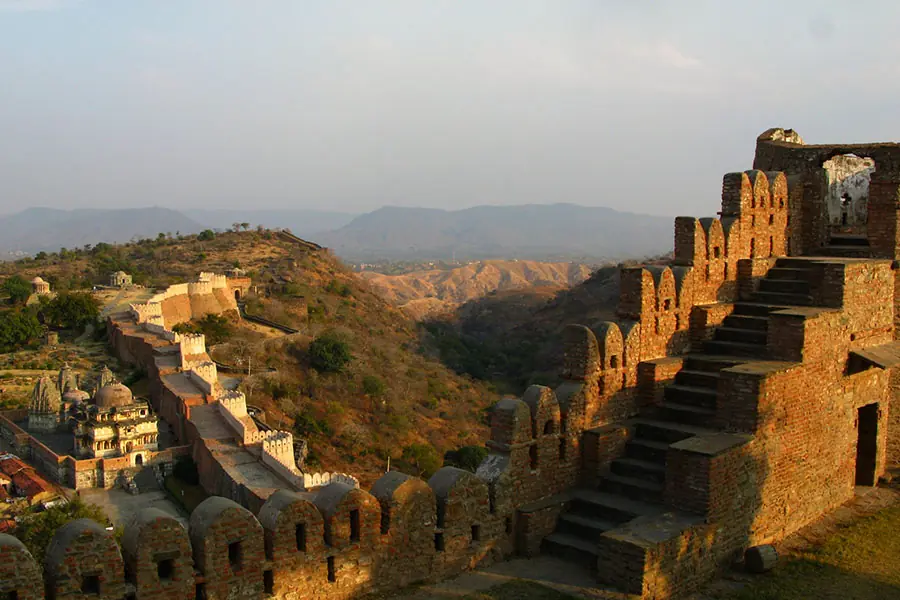
One of the largest structures within Chittorgarh Fort, Rana Kumbha Palace served as the royal residence of Maharana Kumbha. The palace, though now in ruins, retains its regal charm and offers a fascinating glimpse into the architectural brilliance of the Rajput dynasty. The palace is also linked to the tragic jauhar performed by Rani Padmini and the other Rajput women. Exploring this historical site is a sobering experience that reminds visitors of the sacrifices made by these brave individuals.
6. Fateh Prakash Palace Museum

Located within the Chittorgarh Fort complex, the Fateh Prakash Palace Museum houses an impressive collection of artifacts that offer insight into the history and culture of the region. The museum features sculptures, paintings, manuscripts, and royal armor, all of which provide a deeper understanding of the Mewar dynasty. The museum is a must-visit for history buffs and anyone who wants to learn more about the legacy of Chittorgarh’s rulers.
7. Meera Temple
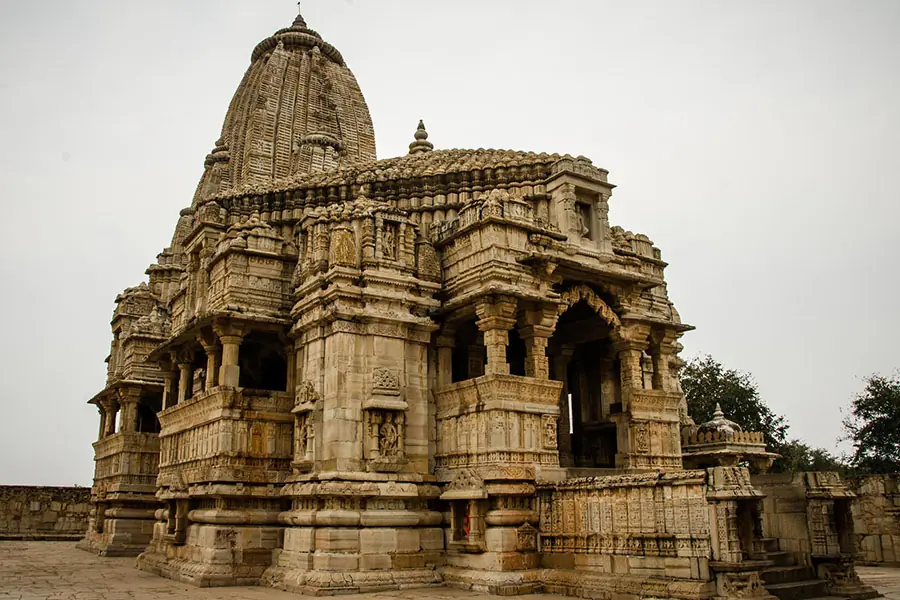
Meera Temple is dedicated to the legendary poet-saint Meera Bai, a devotee of Lord Krishna. This beautiful temple, located within the Chittorgarh Fort, is a spiritual haven for followers of Meera Bai. The temple’s simple yet elegant architecture is complemented by an atmosphere of devotion and peace. Visitors can take a moment to pay their respects and admire the temple’s tranquil surroundings.
8. Gaumukh Reservoir
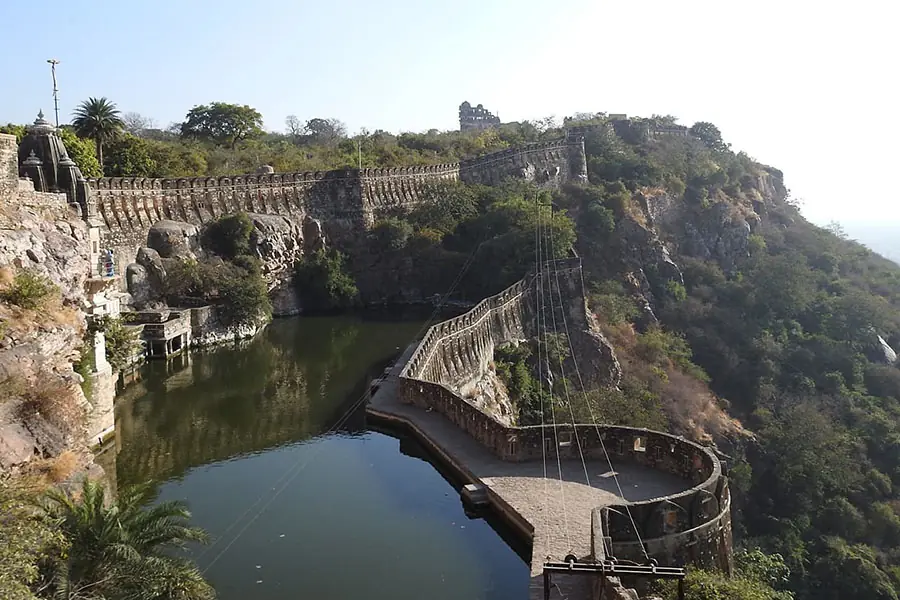
The Gaumukh Reservoir, located within the fort complex, is a natural spring that has been a source of water for centuries. The name “Gaumukh” means “cow’s mouth,” referring to the rock formation through which water flows into the reservoir. The reservoir holds religious significance, and many visitors stop here to offer prayers or simply relax by the water’s edge. The serenity of the place makes it a perfect spot for quiet reflection.
9. Kalika Mata Temple
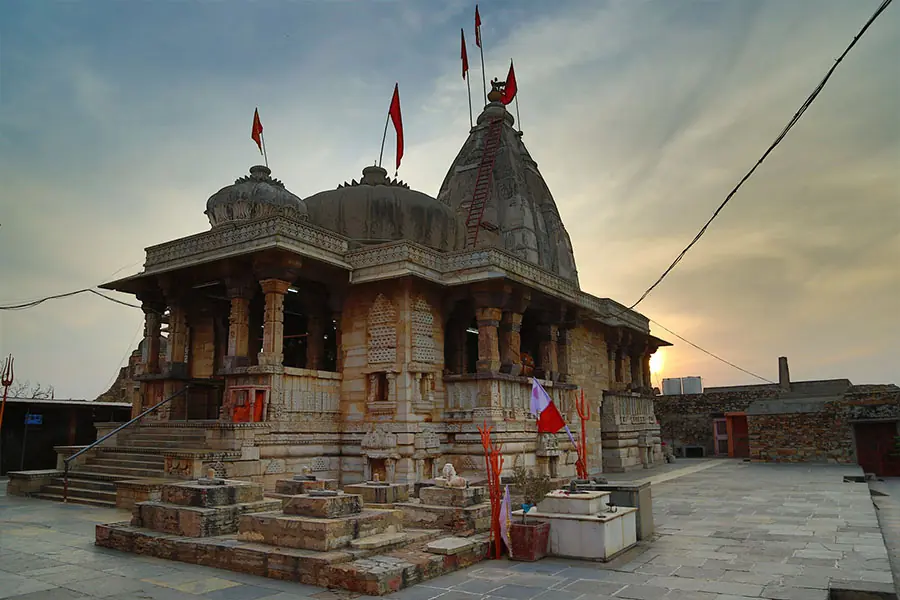
Kalika Mata Temple is one of the oldest temples in Chittorgarh, dating back to the 8th century. Originally built to honor the Sun God, the temple was later dedicated to Goddess Kali. The temple attracts a steady stream of devotees, particularly during festivals. The stone carvings and detailed architecture make it a fascinating place to explore. Pilgrims come here to seek blessings, while tourists appreciate its historical and spiritual significance.
10. Ratan Singh Palace
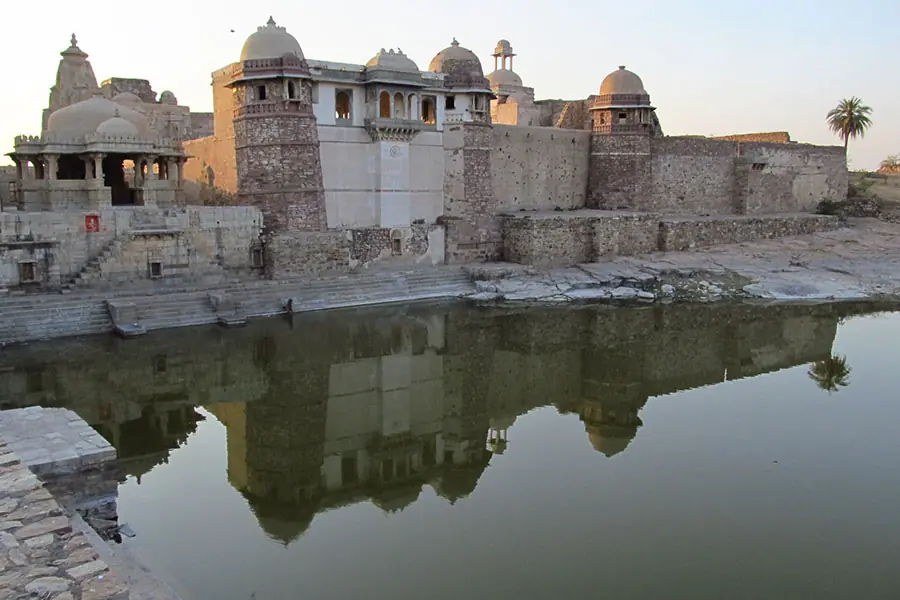
Overlooking a picturesque lake, Ratan Singh Palace is another gem within Chittorgarh Fort. This lesser-known palace offers stunning views of the fort and surrounding landscape. Though not as well-preserved as other structures, the palace still retains its grandeur and charm. Visitors can enjoy the tranquil atmosphere and take in the scenic beauty of the nearby water bodies, making it a favorite spot for photographers and history enthusiasts.
11. Bassi Wildlife Sanctuary
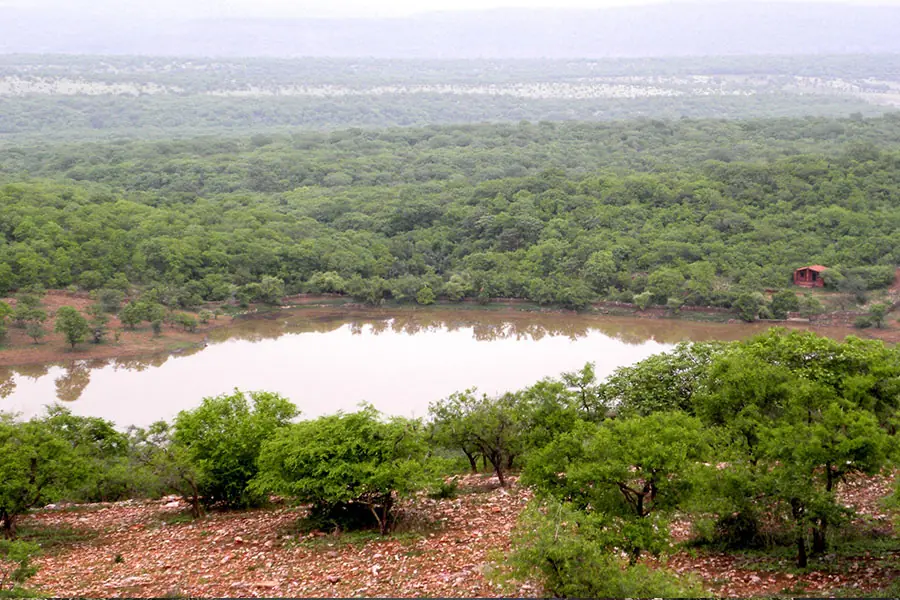
Located about 5 kilometers from Chittorgarh, the Bassi Wildlife Sanctuary offers a refreshing escape into nature. The sanctuary is home to various species of wildlife, including leopards, wild boars, antelopes, and a variety of bird species. Visitors can take a safari through the sanctuary to spot these animals in their natural habitat. The lush greenery and peaceful surroundings make it an ideal destination for nature lovers.
12. Sanwaliya Ji Temple
Dedicated to Lord Krishna, the Sanwaliya Ji Temple is located about 40 kilometers from Chittorgarh. Thousands of devotees visit the temple every year to seek blessings and offer prayers. The temple is known for its architectural beauty and spiritual ambiance. The intricate carvings and the large courtyard make it an important pilgrimage site. Visitors can feel the devotion and peace that pervades the temple grounds.
13. Sita Mata Wildlife Sanctuary

For wildlife enthusiasts, a visit to the Sita Mata Wildlife Sanctuary is a must. Named after Sita from the Ramayana, the sanctuary is a bird watcher’s paradise, boasting a variety of migratory and native bird species. The sanctuary also houses leopards, hyenas, and deer, making it a great spot for a safari. Nature lovers will appreciate the beauty and diversity of the flora and fauna found here.
14. Nagari

Situated just 18 kilometers from Chittorgarh, Nagari is an ancient town with a history dating back to the Mauryan period. It was once a flourishing center of Hindu and Buddhist learning. Today, visitors can explore the archaeological remains, including ancient inscriptions, coins, and sculptures that have been discovered at the site. Nagari offers a fascinating insight into the early history of India and its religious traditions.
15. Menal Waterfall

Located about 90 kilometers from Chittorgarh, the Menal Waterfall is a hidden gem that offers a peaceful retreat from the hustle and bustle of city life. The waterfall is most impressive during the monsoon season when the water gushes down in full force. The surrounding area is dotted with ancient temples and ruins, making it a perfect day trip for nature lovers and history enthusiasts alike.
Conclusion
Chittorgarh is a destination that embodies the true spirit of Rajasthan. Its rich history, cultural heritage, and natural beauty make it an unforgettable experience for any traveler. Whether you are exploring the grand Chittorgarh Fort, visiting the tranquil temples, or admiring the scenic waterfalls, the city offers something for everyone. Each place tells a unique story of courage, devotion, and sacrifice, making Chittorgarh a place where history comes alive.
FAQs
- What is the best time to visit Chittorgarh?
The best time to visit is between October and March when the weather is pleasant, making it ideal for sightseeing. - How do I reach Chittorgarh?
Chittorgarh is well-connected by road and rail. The nearest airport is in Udaipur, about 120 kilometers away. From there, you can take a bus or hire a taxi to reach Chittorgarh. - Is Chittorgarh safe for tourists?
Yes, Chittorgarh is generally safe for tourists. However, like any travel destination, it’s wise to stay aware of your surroundings and take standard safety precautions. - Are there any entry fees for the forts and temples?
Most of the historical sites and temples in Chittorgarh have nominal entry fees. It’s best to check the specific sites in advance to prepare accordingly. - What should I wear while visiting Chittorgarh?
Dress comfortably and appropriately for the weather. Lightweight, breathable fabrics work well, and it’s advisable to wear good walking shoes, especially when exploring the fort and its vast grounds. - Can I hire a guide for a better experience?
Yes, hiring a local guide can greatly enhance your experience. They can provide in-depth information about the history, culture, and significance of each site. - What other activities can I do in Chittorgarh?
Apart from sightseeing, you can enjoy local cuisine, visit traditional markets, or participate in cultural events and festivals if your visit coincides with one.
Final Thoughts
Chittorgarh stands as a testimony to India’s glorious past, filled with tales of valor, sacrifice, and the indomitable spirit of its people. Each of the Top 15 Places to Visit reflects a part of this rich heritage, inviting travelers to delve deeper into its history and marvel at its architectural splendor. Whether you are an avid history buff, a nature enthusiast, or someone looking to experience the vibrant culture of Rajasthan, Chittorgarh promises an unforgettable journey.
Exploring Chittorgarh is not just about visiting historical sites; it’s about experiencing the essence of Rajasthan. The stories embedded in its walls, the serene beauty of its landscapes, and the warm hospitality of its people will leave a lasting impression on every visitor.
So, pack your bags and get ready to uncover the majestic tales and breathtaking views that Chittorgarh has to offer. It’s time to walk the paths of the brave and celebrate the rich tapestry of history that awaits you!


